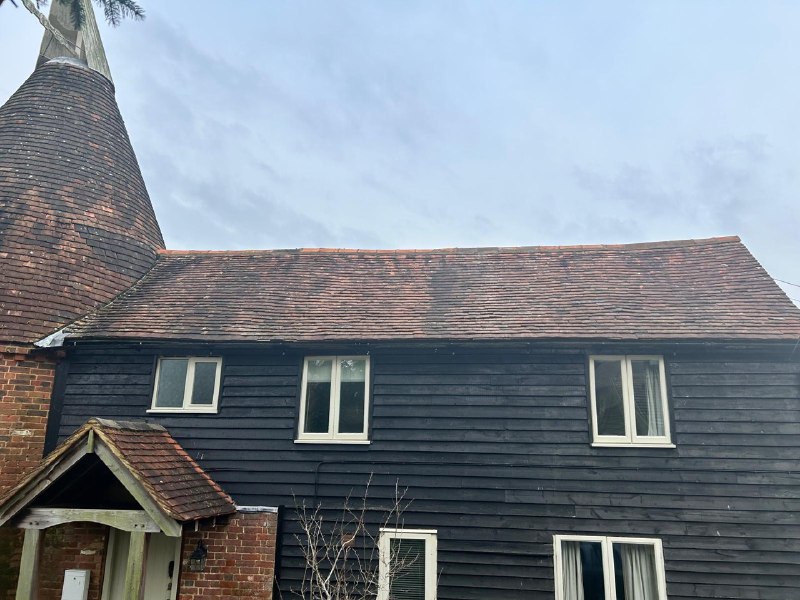How to Find and Fix Leaks in Flat Roofs
Introduction: Flat roofs are popular for many buildings due to their modern aesthetic and cost-effectiveness. However, they can be prone to leaks, leading to significant damage if not addressed promptly. At SCG Roofing Earls Barton, we understand the importance of maintaining your flat roof and want to provide you with a comprehensive guide on how to find and fix leaks effectively.
Identifying the Signs of a Flat Roof Leak
Before you can fix a leak, you need to know where it is. Here are some common signs that your flat roof might be leaking:
1. Water Stains on the Ceiling
Water stains are one of the most obvious signs of a leak. These stains often appear as brown or yellowish marks on your ceiling, indicating water intrusion from the roof above.
2. Damp or Musty Smell
A persistent damp or musty smell in your property can suggest a leak. This odour is caused by moisture accumulating in the insulation or other materials beneath the roof.
3. Blistering or Bubbling
If you notice blistering or bubbling on the surface of your flat roof, this could be a sign of trapped moisture. These blisters can eventually burst, leading to leaks.
4. Puddles of Water
Flat roofs are designed to have a slight pitch to allow water to drain off. If you see puddles of water on your roof that do not drain away within a day or two, it could indicate poor drainage or a potential leak.
5. Interior Damage
Peeling paint, mould growth, and damaged plaster inside your property indicate a roof leak. These issues often arise when water seeps into the walls and ceiling.
Locating the Source of the Leak
Finding the exact source of a leak can be challenging, as water can travel before it shows signs of damage. Here are some steps to help you locate the source:
1. Inspect the Roof Surface
Carefully examine the roof surface for any signs of damage, such as cracks, blisters, or punctures. Pay special attention to areas around roof penetrations, such as vents, skylights, and chimneys.
2. Check the Flashing
Flashing seals joints and edges on your roof. Inspect the flashing for signs of corrosion, gaps, or loose sections. Damaged or improperly installed flashing can be a common source of leaks.
3. Look for Membrane Damage
Flat roofs often have a waterproof membrane. Check for any damage to this membrane, such as tears or come-apart seams. Membrane damage can allow water to penetrate the roof structure.
4. Examine Roof Penetrations
Any penetration through the roof, such as pipes or vents, can be a potential source of leaks. Ensure these areas are properly sealed and check for any signs of deterioration.
5. Use a Water Hose
If you can’t locate the leak visually, you can use a water hose to simulate rain. Start at the lowest point of the suspected leak area and work your way up, one section at a time. Have someone inside the building watch for signs of water infiltration.
Fixing Flat Roof Leaks
Once you’ve identified the source of the leak, it’s time to fix it. Here are some common methods for repairing flat roof leaks:
1. Patch Small Holes and Cracks
A patching compound can be used for minor damage, such as small holes or cracks. Clean the area around the damage, apply the compound, and smooth it out to ensure a watertight seal.
2. Replace Damaged Flashing
If the flashing is damaged, it’s essential to replace it. Remove the old flashing and install new flashing in its place, ensuring it is properly sealed to prevent future leaks.
3. Repair Membrane Damage
You may need to apply a patch for larger tears or damage to the roof membrane. Cut a piece of membrane that extends beyond the damaged area, adhere it with roofing adhesive, and seal the edges with roofing cement.
4. Reseal Roof Penetrations
Ensure all roof penetrations, such as vents and skylights, are properly sealed. Use a high-quality sealant to create a watertight barrier around these areas.
5. Consider a Professional Inspection
If you’re unsure about the extent of the damage or the best repair method, it’s advisable to seek professional help. At SCG Roofing Earls Barton, we offer expert roof inspections and repair services to ensure your flat roof is in optimal condition.
Preventing Future Leaks
Maintaining your flat roof is crucial to prevent future leaks. Here are some tips to keep your roof in top condition:
1. Regular Inspections
Conduct regular inspections of your flat roof to catch any potential issues early. Look for signs of wear and tear, and address any minor damage before it becomes a major problem.
2. Clean the Roof
Keep your roof free from debris, such as leaves and branches, which can trap moisture and cause damage. Ensure your drainage system is clear to prevent water pooling.
3. Maintain Roof Seals
Check and maintain all roof seals, including around penetrations and edges. Reseal any areas that show signs of deterioration.
4. Professional Maintenance
Consider scheduling regular professional maintenance to ensure your flat roof remains in good condition. Professional roofers can identify and address potential issues that may not be visible to the untrained eye.
Conclusion: Finding and fixing leaks in flat roofs is essential to maintaining the integrity of your property. By identifying the signs of leaks, locating the source, and applying the appropriate repairs, you can extend the lifespan of your flat roof and prevent further damage. Regular maintenance and professional inspections can ensure your roof remains leak-free for years.
Call us on: 01604 261 699
Click here to find out more about SCG Roofing Earls Barton
Click here to complete our contact form and see how we can help you with your roofing needs.

